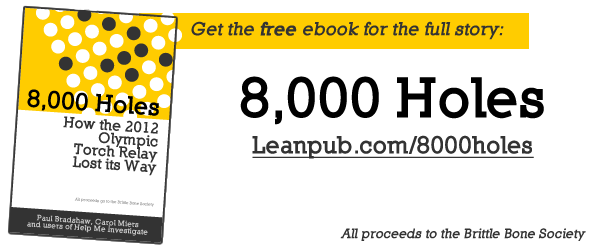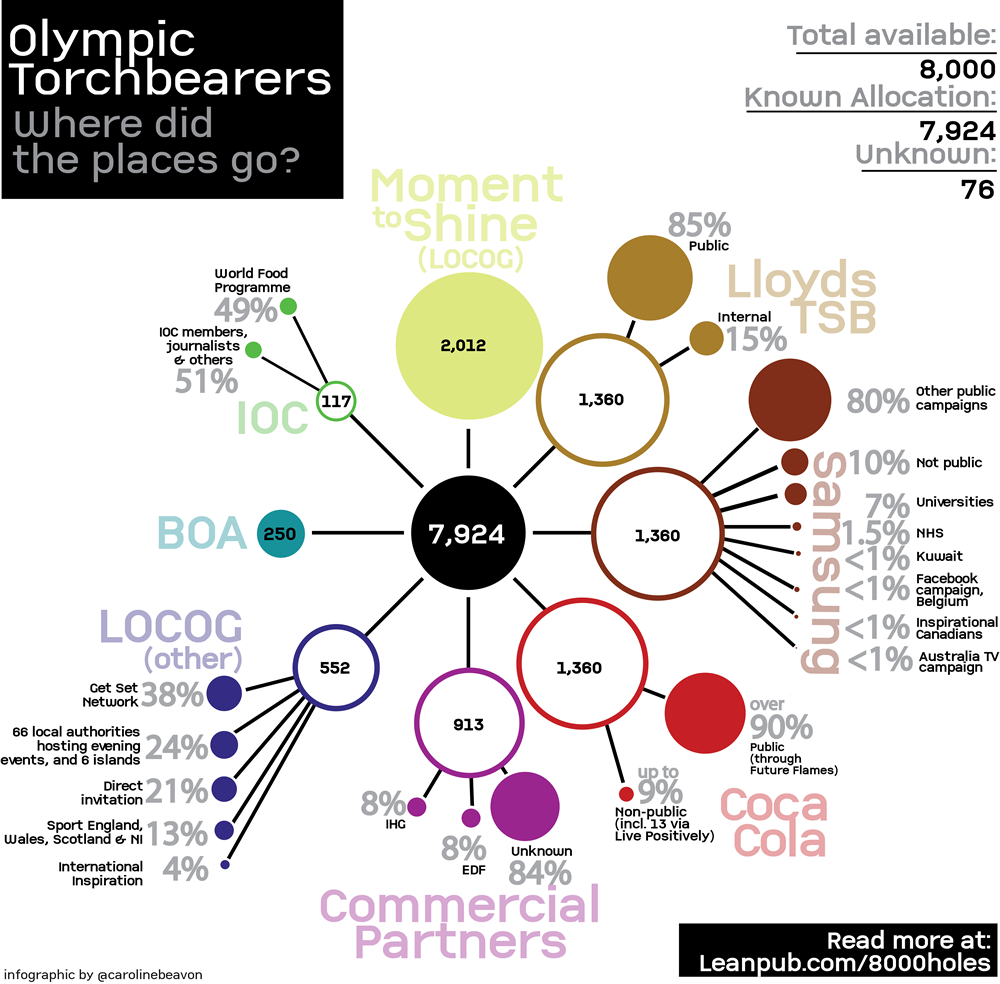Updates follow original post below
The commonly-quoted figure that 90% of torchbearer slots were “available to the public” is wrong, an analysis of official figures suggests.
According to LOCOG statistics published by ITV News, torchbearer allocations were distributed as follows:
- “33% of places held by LOCOG (total 2,640)
- “17% of places to each of the three Presenting Partners (total 1360 each)
- “16% of places shared between the IOC (total 117), BOA (total 250) and other Games commercial partners (total 913).”
Based on the above numbers, commercial partner slots alone represent 11.4% of the total. Only 84% – not 90% – have been allocated to members of the public through various competitions and nomination processes. This represents 480 people who have missed out on promised slots. Organisations who are not Presenting Partners cannot allocate torchbearer slots publicly.
UPDATE (June 12, 10am): A spokesperson for London2012 confirmed the figures and adds:
“The BOA and IOC and some of the commercial partners in the 16 per cent allocation also put forward members of the public too e.g. grassroots sports coaches, athletes, long-term supporters of Games and existing customers in case of commercial partners.”
However, as only Presenting Partners can accept nominations from members of the public, it’s not clear how other commercial partners would have been able to do so.
The statement appears to contradict figures previously in documents from organisations including the BOA, which explicitly states that its own places are separate from those available to the ‘general public’:
“90% of these slots will be allocated to the general public through each [Presenting Partner] company’s own public selection process. The remaining 10% has been allocated to other deserving bodies, of which the British Olympic Association is one.”
It’s also not clear how London2012 could be confident that the extra 6% of places were “made available to the public”. We are awaiting a response explaining what processes were in place to monitor that.
UPDATE (June 12, 7pm): A further response states the following:
“90% of the 8,000 Torchbearer places are made available to the public through a number of channels, including the four public nomination campaigns from LOCOG, Coca-Cola, Lloyds TSB and Samsung.
“The 16% share is made up of core stakeholders, for example, the IOC, BOA and commercial Games partners. Some of these stakeholders could also put forward members of the public, for example, long-term supporters of the Games and sports coaches.
“The rights packages for some partners included a small number of Torchbearer places that had to be filled through internal campaigns, for example, from existing customer and staff pools.”
The spokesperson does not address the question of what processes were in place to monitor any allocation of places to ‘members of the public’ in this way.
We have asked again for clarification on that process, specifically whether LOCOG can identify the 480 members of the public who may have been given torchbearer spaces through routes other than those previously outlined.


